Tectonic Movements
Tectonic movements refer to the large-scale movements of the Earth's lithosphere, which are responsible for the formation of continents, mountains, and the occurrence of earthquakes and volcanic activity. These movements are driven by the heat generated from the decay of radioactive elements and the heat left over from the Earth's formation.
Types of Tectonic Movements
There are three main types of tectonic movements:
- Divergent Boundaries: These occur where tectonic plates move away from each other. This movement can result in the formation of new oceanic crust and rift valleys.
- Convergent Boundaries: These occur where tectonic plates collide. Depending on the type of plates involved, this movement can result in the formation of mountains, volcanic arcs, and ocean trenches.
- Transform Boundaries: These occur where tectonic plates slide past each other. This movement can result in earthquakes as the plates grind against each other.
Study Guide
Key Concepts
- Definition of tectonic movements
- Causes of tectonic movements
- Types of tectonic boundaries
- Features associated with each type of boundary
Key Terms
- Lithosphere
- The rigid outer part of the Earth, consisting of the crust and upper mantle.
- Divergent Boundaries
- Boundaries where tectonic plates move away from each other.
- Convergent Boundaries
- Boundaries where tectonic plates collide.
- Transform Boundaries
- Boundaries where tectonic plates slide past each other.
Study Tips
- Use diagrams to understand the movement of tectonic plates at different types of boundaries.
- Research specific examples of geological features formed by tectonic movements, such as the Mid-Atlantic Ridge and the Himalayas.
- Watch videos or animations that illustrate tectonic movements to visualize the processes in action.
By understanding tectonic movements, we can gain insight into the dynamic processes that shape the Earth's surface and contribute to natural phenomena such as earthquakes and volcanic eruptions.
.◂Science Worksheets and Study Guides Third Grade. Weather
Study Guide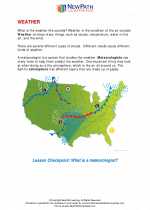 Weather
Weather  Worksheet/Answer key
Worksheet/Answer key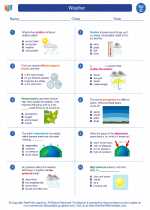 Weather
Weather  Worksheet/Answer key
Worksheet/Answer key Weather
Weather  Worksheet/Answer key
Worksheet/Answer key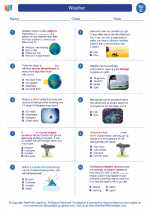 Weather
Weather  Vocabulary/Answer key
Vocabulary/Answer key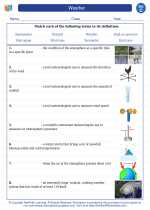 Weather
Weather  Vocabulary/Answer key
Vocabulary/Answer key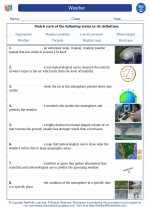 Weather
Weather 

 Worksheet/Answer key
Worksheet/Answer key
 Worksheet/Answer key
Worksheet/Answer key
 Worksheet/Answer key
Worksheet/Answer key
 Vocabulary/Answer key
Vocabulary/Answer key
 Vocabulary/Answer key
Vocabulary/Answer key

The resources above cover the following skills:
EARTH AND SPACE SCIENCE (NGSS)
Earth’s Systems
Students who demonstrate understanding can:
Represent data in tables and graphical displays to describe typical weather conditions expected during a particular season.